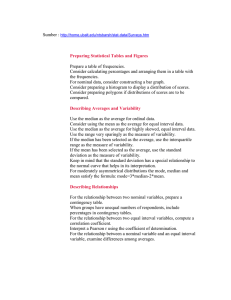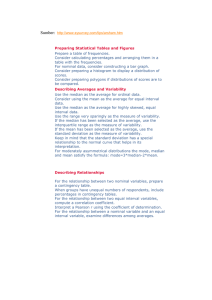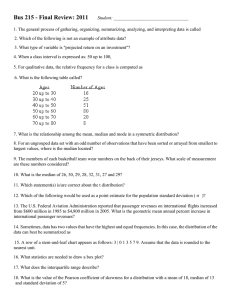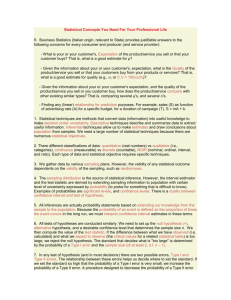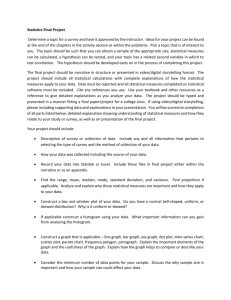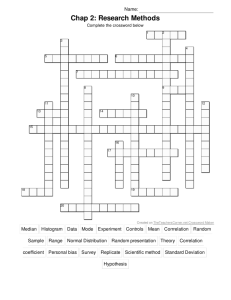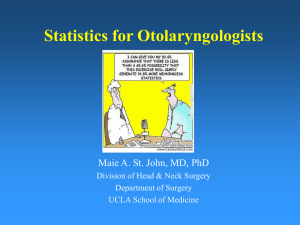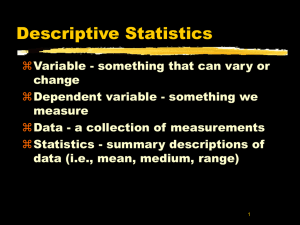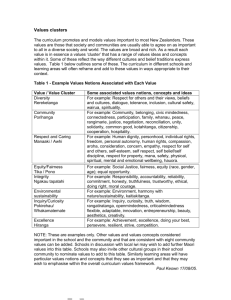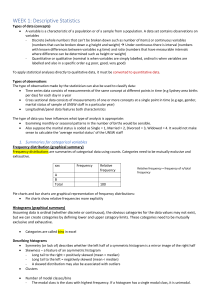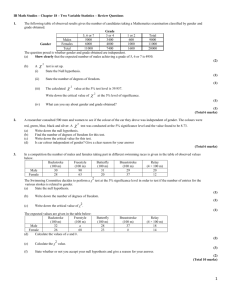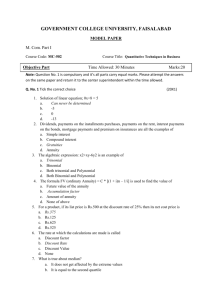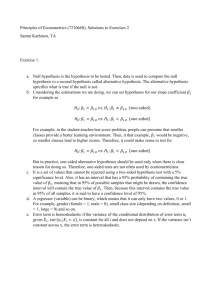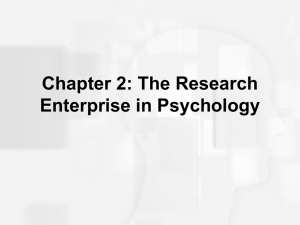Statistics_questions
advertisement
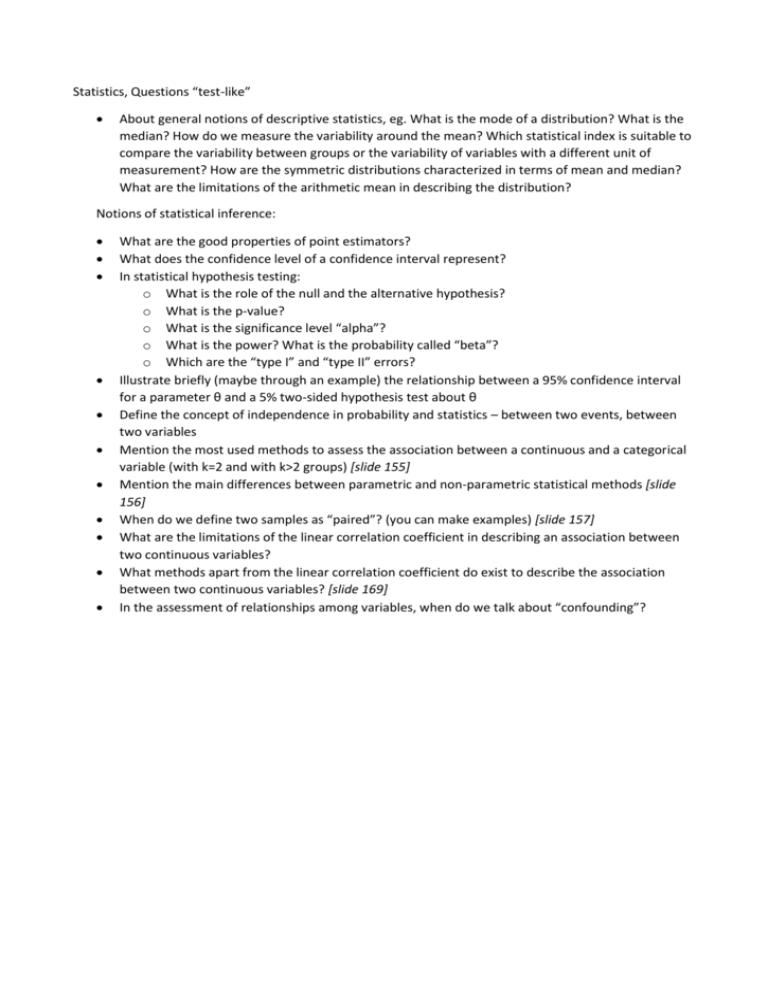
Statistics, Questions “test-like” About general notions of descriptive statistics, eg. What is the mode of a distribution? What is the median? How do we measure the variability around the mean? Which statistical index is suitable to compare the variability between groups or the variability of variables with a different unit of measurement? How are the symmetric distributions characterized in terms of mean and median? What are the limitations of the arithmetic mean in describing the distribution? Notions of statistical inference: What are the good properties of point estimators? What does the confidence level of a confidence interval represent? In statistical hypothesis testing: o What is the role of the null and the alternative hypothesis? o What is the p-value? o What is the significance level “alpha”? o What is the power? What is the probability called “beta”? o Which are the “type I” and “type II” errors? Illustrate briefly (maybe through an example) the relationship between a 95% confidence interval for a parameter θ and a 5% two-sided hypothesis test about θ Define the concept of independence in probability and statistics – between two events, between two variables Mention the most used methods to assess the association between a continuous and a categorical variable (with k=2 and with k>2 groups) [slide 155] Mention the main differences between parametric and non-parametric statistical methods [slide 156] When do we define two samples as “paired”? (you can make examples) [slide 157] What are the limitations of the linear correlation coefficient in describing an association between two continuous variables? What methods apart from the linear correlation coefficient do exist to describe the association between two continuous variables? [slide 169] In the assessment of relationships among variables, when do we talk about “confounding”?

